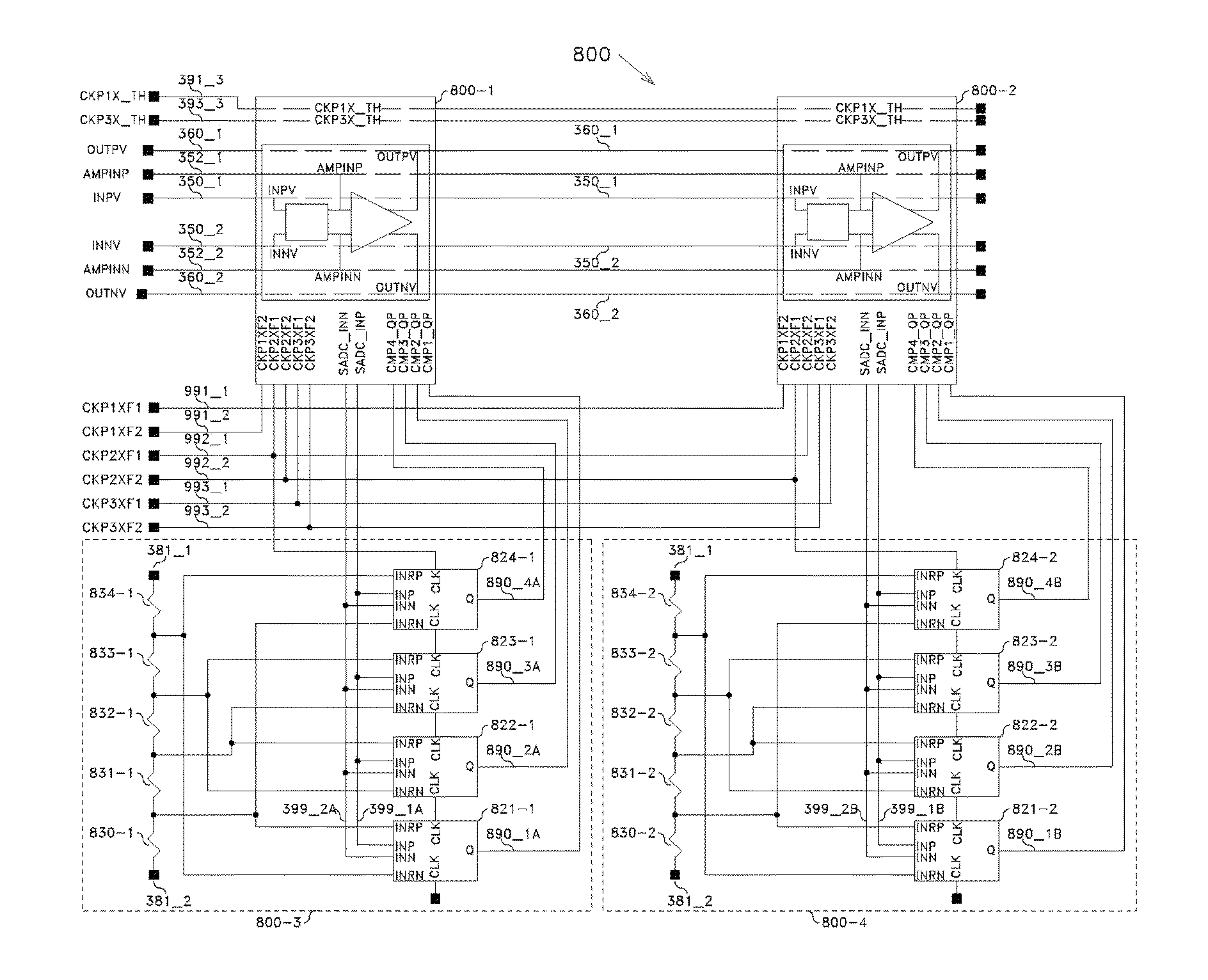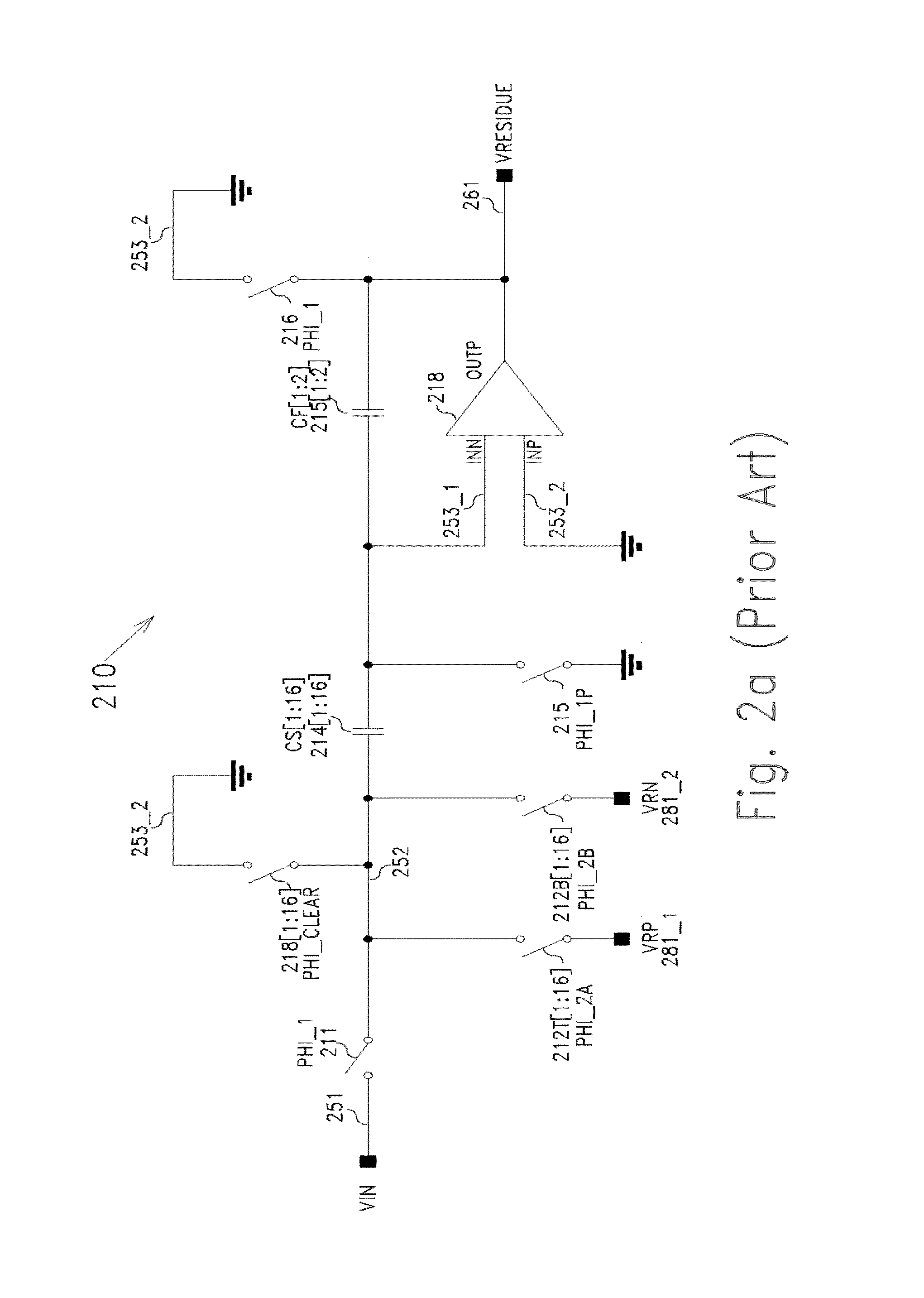ADC first stage combining both sample-hold and ADC first stage analog-to-digital conversion functions
a technology of analog-to-digital conversion and first stage, which is applied in the field of analog-to-digital converters (adcs), can solve the problems of small nonlinear error, increase the amount of power required by the adc, and consume a large fraction of the total adc power
- Summary
- Abstract
- Description
- Claims
- Application Information
AI Technical Summary
Benefits of technology
Problems solved by technology
Method used
Image
Examples
Embodiment Construction
[0041]Various aspects of embodiments, some or all of which may be included in different implementations of the invention, offer corresponding advantages relative to the prior art. For example, one aspect addresses the limitations present in the Devarajan and Rezayee systems to achieve SHA-less pipeline ADC sampling rates up to, and beyond, the GSPS region of operation by combining the track and hold functions of an SHA-less pipeline ADC with the first stage MDAC functions of a pipeline ADC. These limitations may be overcome by duplicating the resulting ADC first stage circuit to create a first ADC first stage and a second ADC first stage, connecting the analog inputs of the first and second ADC first stages, and providing a novel combination of CMOS capacitors, residue amplifiers, switches, autozero circuits, and different timing intervals to reduce 1 / f noise contribution, DC offset, and set the residue amplifier common-mode output voltage. Such different timing intervals are facili...
PUM
 Login to View More
Login to View More Abstract
Description
Claims
Application Information
 Login to View More
Login to View More - R&D
- Intellectual Property
- Life Sciences
- Materials
- Tech Scout
- Unparalleled Data Quality
- Higher Quality Content
- 60% Fewer Hallucinations
Browse by: Latest US Patents, China's latest patents, Technical Efficacy Thesaurus, Application Domain, Technology Topic, Popular Technical Reports.
© 2025 PatSnap. All rights reserved.Legal|Privacy policy|Modern Slavery Act Transparency Statement|Sitemap|About US| Contact US: help@patsnap.com



